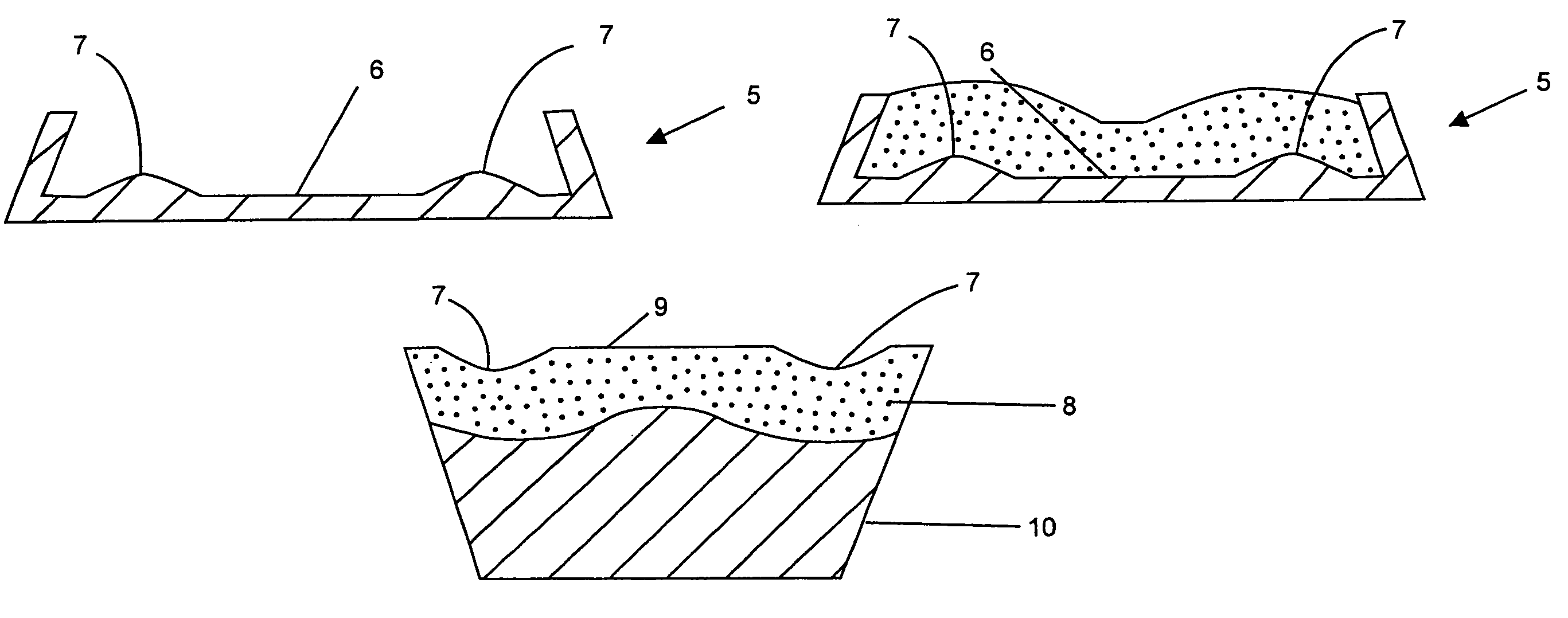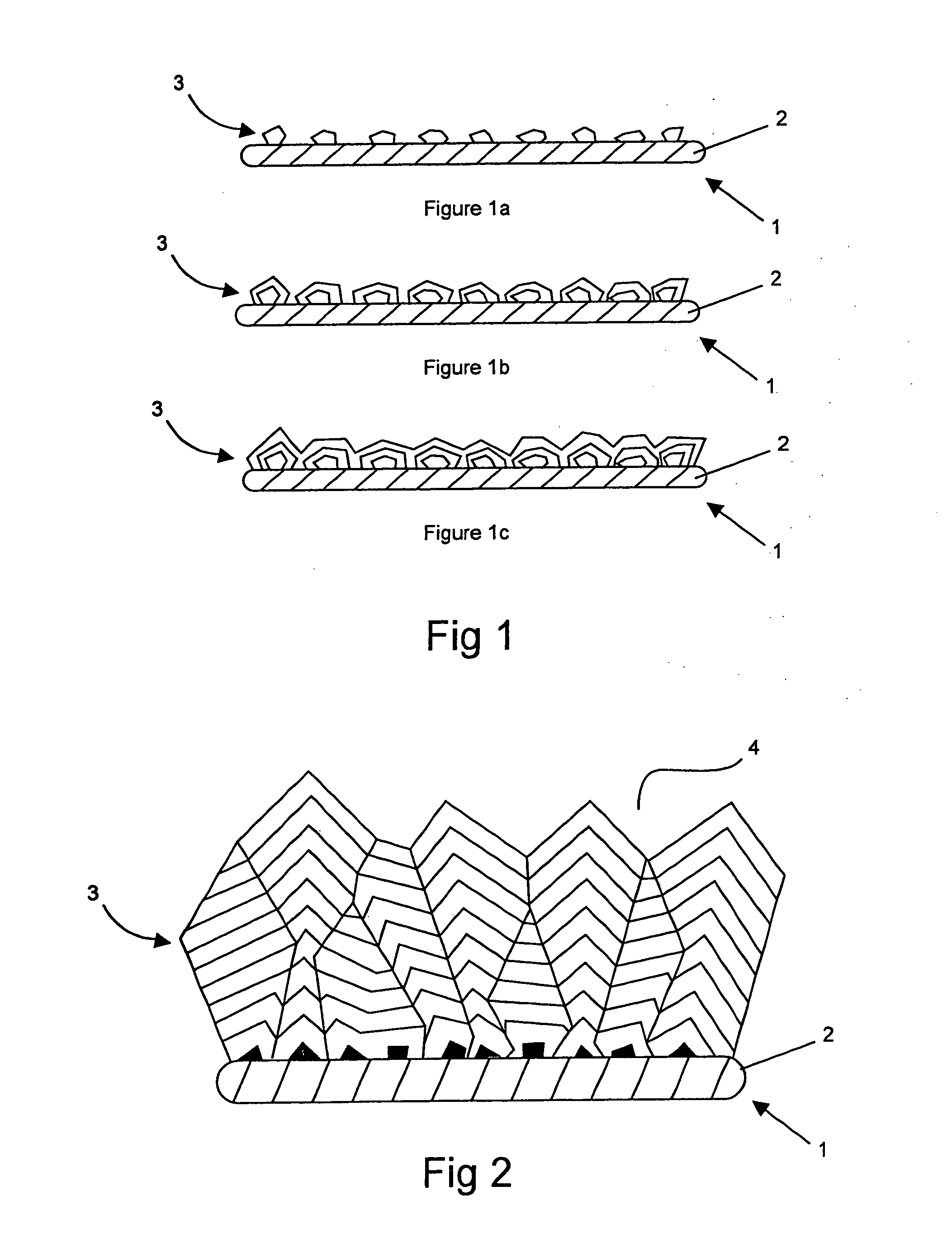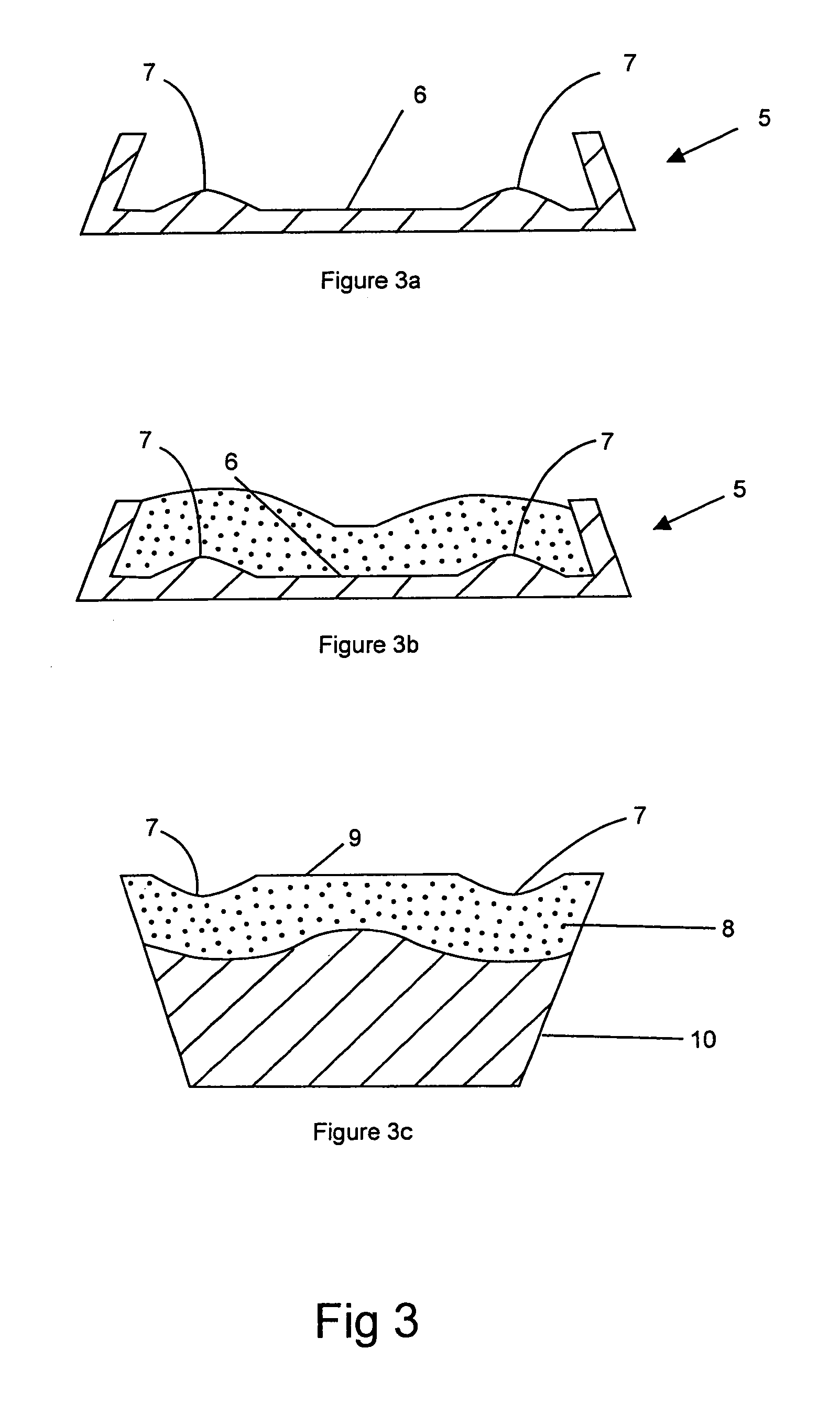Casting method for producing surface acoustic wave devices
a surface acoustic wave and casting method technology, applied in the field of devices, can solve the problems of micro-cracks or variations on the surface of mechanical polishing, difficult and tedious mechanical grinding and polishing, and often exceed the cost of making the diamond film itsel
- Summary
- Abstract
- Description
- Claims
- Application Information
AI Technical Summary
Benefits of technology
Problems solved by technology
Method used
Image
Examples
example 1
[0159]One side of a 0.7 mm thick silicon wafer is polished to a surface roughness of about 3 angstroms. The polished wafer is then placed in a CVD reactor using tungsten filaments and filled with hydrogen gas containing 1% by volume methane at 40 torr. The silicon wafer is maintained at a temperature of about 900° C. The process maintained for 10 hours, wherein the diamond layer thickness is about 10 micrometers. The silicon wafer is removed from the reactor, whereupon it is noted that the growth surface contains crystalline facets of several microns.
[0160]The growth surface of the diamond layer is then brazed to a tungsten support layer having a thickness of 2 mm using a braze foil. The braze foil is an amorphous nickel alloy (available under the tradename MBF-20 from Honeywell). The braze foil is placed between the growth surface of the diamond layer and the support layer and heated to 1010° C. under vacuum for 17 minutes. Upon cooling, a majority of the silicon is removed using a...
example 2
[0161]The same process as in Example 1, except the mold and support layers were titanium and the braze alloy was Ag—Cu—Ti alloy. A one micron thick layer of ZnO was deposited by sputtering on the working surface of the diamond under vacuum. Next, a one micron thick layer of aluminum was deposited on the ZnO. A portion of the aluminum layer was then etched away to form IDT pads to create a SAW filter. The resulting SAW filter performed well at frequencies above about 2 GHz.
example 3
[0162]Copper plates were polished to an Ra of about 5 nm using an ultrasonic bath of nano-sized diamond particles. After drying, the plates were placed in a CVD reactor and a diamond film of about 10 microns were deposited as described in Example 1. As the copper cools the thin diamond layer peels from the copper mold. A braze foil of 0.001 inches thick (MBF-20 as in Example 1) is placed on a tungsten support layer. The thin diamond layer is then pressed against the braze foil using a stainless steel block sprayed with boron nitride powder to form an assembly. The assembly is then heated to 1010° C. for about 8 minutes under vacuum of 10−5 torr.
PUM
| Property | Measurement | Unit |
|---|---|---|
| thickness | aaaaa | aaaaa |
| thickness | aaaaa | aaaaa |
| thickness | aaaaa | aaaaa |
Abstract
Description
Claims
Application Information
 Login to View More
Login to View More - R&D
- Intellectual Property
- Life Sciences
- Materials
- Tech Scout
- Unparalleled Data Quality
- Higher Quality Content
- 60% Fewer Hallucinations
Browse by: Latest US Patents, China's latest patents, Technical Efficacy Thesaurus, Application Domain, Technology Topic, Popular Technical Reports.
© 2025 PatSnap. All rights reserved.Legal|Privacy policy|Modern Slavery Act Transparency Statement|Sitemap|About US| Contact US: help@patsnap.com



